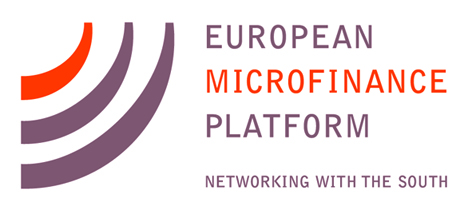During  the plenary titled “Creating an Environment for Effective and Inclusive Savings” on day two of European Microfinance Week, Stuart Rutherford of the Hrishipara Daily Diaries Project suggested thinking of savings as two separate services – collection and storage. While storage is primary for a person with regular paychecks deposited into a bank electronically, collection is critical for cash earners. This is why the service of a susu worker, who collects deposits frequently door-to-door and then returns “withdrawals” periodically, is so valuable that people are willing to pay fees for it.
the plenary titled “Creating an Environment for Effective and Inclusive Savings” on day two of European Microfinance Week, Stuart Rutherford of the Hrishipara Daily Diaries Project suggested thinking of savings as two separate services – collection and storage. While storage is primary for a person with regular paychecks deposited into a bank electronically, collection is critical for cash earners. This is why the service of a susu worker, who collects deposits frequently door-to-door and then returns “withdrawals” periodically, is so valuable that people are willing to pay fees for it.
Luis Treviño Garza of the Alliance for Financial Inclusion noted that savings is an “important factor for resilience, especially for vulnerable groups.” He added that “from the regulator’s perspective savings is really crucial… above credit.”
Mr Rutherford said that “all the diaries I’ve [collected in Bangladesh] show that poor people have a strong propensity to save.” He said there has been a move toward susu-style collections over the last 20 years, away from “do-it-yourself” methods such as savings clubs or having a trusted neighbor hold one’s cash. He added that most people have more money saved than they owe in loans. People often get in the habit of savings and then continue to do so even in tough times such as during the COVID-19 pandemic.
Dr Elisabeth Rhyne, who founded the Center for Financial Inclusion at Accion, argued that it often is not in the best interest of clients to save in an institution. Inflation might be so high that too much value is lost while the money sits in a savings account. Does the client trust the institution? Are there better uses for the cash, such as an investment in the family home that can bring in rental income?
Dr Rhyne agreed with Mr Rutherford that people are interested in saving. Instead it is institutions that need incentives to offer savings. “While digitization is expensive,” she said, “it drives down the cost of collecting very small amounts of savings.” This can help motivate financial services providers (FSPs) to expand savings offerings.
Mr Treviño said, “There is increasing interest among regulators in promoting savings.” He also noted the “significant male-female disparity, especially with savings,” whereby women more often use informal options such as savings groups. In response, Egypt and Zambia are working to digitize savings groups, with the aim of increasing women’s financial inclusion. Part of the challenge is that regulators must protect the flow of savings and other transactions handled by fintechs.
Mr Treviño pointed out that another challenge with fintech services is how to meet know-your-customer (KYC) requirements and how to do so cost effectively. In addition to helping lower costs, he believes, “E-KYC systems pave the way to enabling savings more easily.”
Reiterating the value of savings, Mr Rutherford said, “The thing I would ask MFIs [microfinance institutions] to do is stop smothering their clients with loans.” For example, he said, MFIs sometimes threaten to close a person’s savings account if she doesn’t borrow. Sometimes savers accept unwanted loans just to protect their savings accounts. Mr Rutherford argued that stakeholders must persuade MFIs to lend in ways that simultaneously support savings, for example, by offering “hybrid” products that combine savings and loans. One way to do this is to offer lower-priced loans up to the amount of a person’s savings balance.
Regarding the pandemic, Dr Rhyne noted, “There was a big concern early on by FSPs that there would be massive withdrawal, but that didn’t turn out to be the case.” Mr Rutherford said that according to his organization’s data, “It turned out people had surprisingly large amounts of cash at home…. During lockdown, they tightened their belts.” They “stopped spending on clothes completely,” while spending on “food stayed more or less steady.” There is evidence, he said, that people put away extra cash at home between hearing about the pandemic but before lockdowns went into effect. Even among the 25 percent of diarists earning less than the equivalent of USD 2 per person per day, people did not generally miss meals after the onset of the pandemic. “We have in our diaries documented evidence of people’s extreme resilience during times of crisis.”
This feature is part of a sponsored series on European Microfinance Week 2020, which took place online from November 18 through November 20. The event is held annually by e-MFP. MicroCapital has been engaged to promote and report on the conference each year since 2012.
Sources and Additional Resources
European Microfinance Platform (e-MFP) information on European Microfinance Week 2020
http://www.e-mfp.eu/european-microfinance-week-2020
MicroCapital coverage of European Microfinance Week, including the European Microfinance Award
https://www.microcapital.org/category/european-microfinance-week/
Similar Posts:
- SPECIAL REPORT: Leveraging Financial Inclusion to Get Food Security Back on the Increase #EMW2023
- MICROFINANCE EVENT: Financial Inclusion That Works for Women; March 2, 2023; London, UK
- SPECIAL REPORT: Financial Inclusion of Forcibly Displaced Persons (FDPs), Host Communities Results in Competitive PAR Ratios #EMW2023
- SPECIAL REPORT: Yikri of Burkina Faso Wins $110k European Microfinance Award for Progress Toward Food Security #EMW2023
- MICROFINANCE EVENT: European Microfinance Week; November 15-17, 2023; Luxembourg
